Peeking through the cracks of California’s cliffs, along rocky outcroppings and inland valleys is another remarkable genus of succulents:
Dudleya. Native to California, Arizona and even down to northern Mexico and up to southern coastal Oregon, the Dudleya family includes more than 40 species once thought to be part of the
Echeveria genus. Named for the first head of botany at Stanford University, Dudleya, or liveforever, will thrive in its native landscape with only the slightest supervision, as its common name suggests.
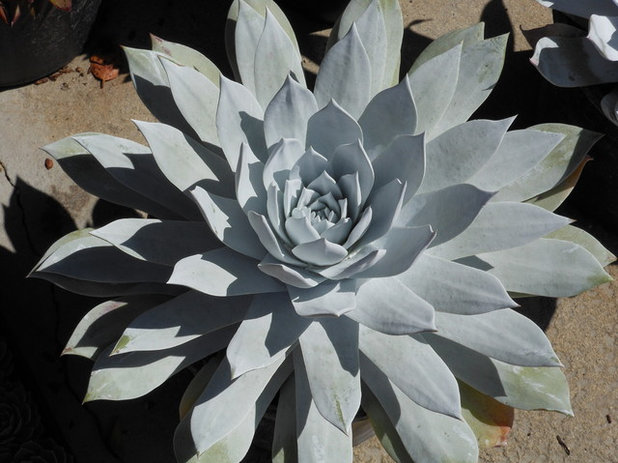
Metta Landscapes
Botanical name: Dudleya spp
Common names: Liveforever
Origin: Native to California, Arizona, coastal Oregon, Baja California
USDA zones: 9 to 11; varies by species (find your zone)
Water requirement: Moderate; prefers the wet winters and dry summers of Southern California
Light requirement: Full sun
Mature size: Varies by species; low ground covers with projected inflorescence
Benefits and tolerances: Drought and coastal tolerant
Seasonal interest: Flowers in spring
When to plant: Plant divisions in fall.
Shown: Dudleya brittonii
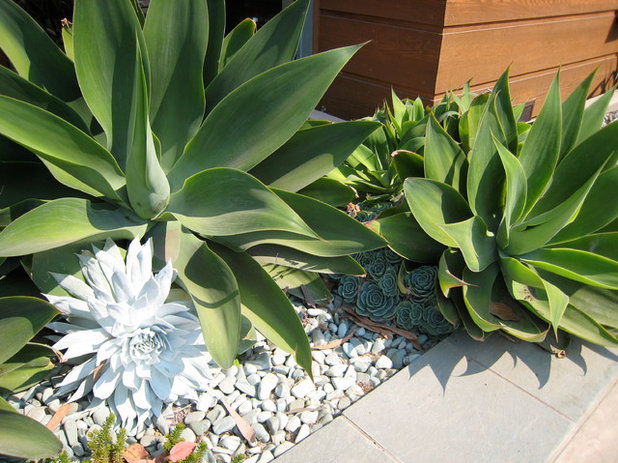
Cathleen Hudson Landscapes
Shown: Dudleya pulverulenta with
Agave attenuata
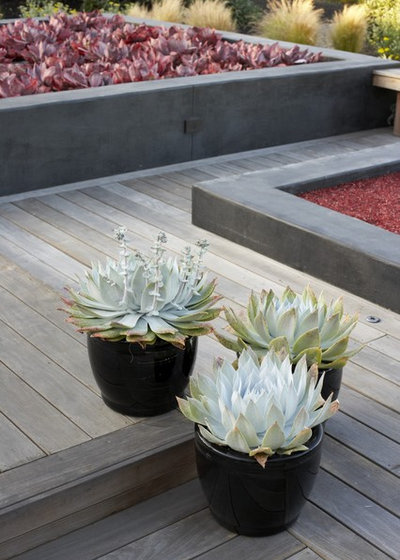
Jeffrey Gordon Smith Landscape Architecture
Distinguishing traits. Liveforever's colors soothe and tend to complement surrounding materials and plants. Rosettes range in the gray to green spectrum; a powdery layer adds a chalky effect.
Late winter and spring welcome towering, leafy inflorescences, but unlike Echeveria, the stalk emerges from the base of the rosette, not the center. Flowers come in a variety of colors, including white, yellow and red.
It’s a winter-growing plant, and when not in bloom it can appear inconspicuous, even dying. Liveforever looks its worst when many plants appear in their finest form, but it revives once the weather cools down and it rains a little — its leaves store water.
Shown: Dudleya pulverulenta
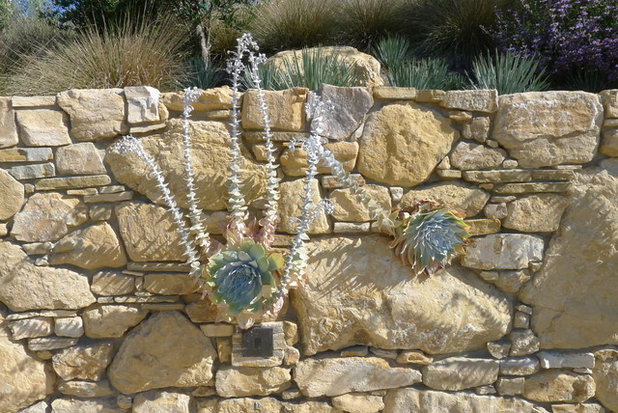
Jeffrey Gordon Smith Landscape Architecture
How to use it. Liveforever is native to cliffs, rocky outcroppings and other free-draining vertical sites. This accounts for its affinity for slopes, which can serve as inspiration for your own garden. It cannot tolerate standing water on its rosettes — or even on its roots — over summer, so a slope or wall that would otherwise be a troubling site is the perfect spot. Planting at an angle is preferred.
Liveforever also grows well in pots and containers. And, as with most succulents, it grows well in rock gardens. Use it as a specimen or allow its chalky color to complement and contrast other succulents; its spring inflorescence will diversify the garden greatly. Due to its preference for bright light, liveforever is not the best houseplant.
Shown: Dudleya pulverulenta
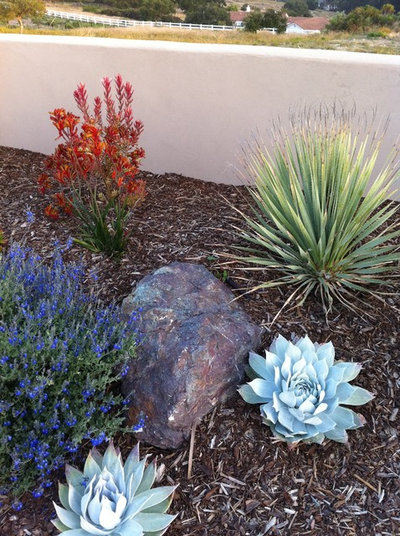
Gardens by Gabriel, Inc.
Planting notes. Accustomed to the conditions of coastal Southern California, liveforever prefers bright sun and mild climates with warm, dry summers and wet, cool winters. Avoid extreme temperature swings with coastal natives; look for species native to inland climates. Plant it in very well-draining soil.
Liveforever goes dormant in summer. It is susceptible to fungal rot and mealybug infestation, especially if proper summer care is not taken. Avoid watering it over summer and give it more regular water in winter. To prevent fungus, remove dead leaves at the base of the plant.
Unlike with many succulents, you cannot propagate with individual leaf cuttings. Propagate in fall by division or with seeds.
Tip: To avoid topsy-turvy plants, cut mature trunks in fall; let the cutting dry out for a couple of days and plant it back in well-drained soil for a tidy, well-packaged plant.
Shown: Dudleya pulverulenta with common sotol
(Dasylirion wheeleri), germander sage
(Salvia chamaedryoides) and orange kangaroo paw (
Anigozanthos ‘Bush Tango’)
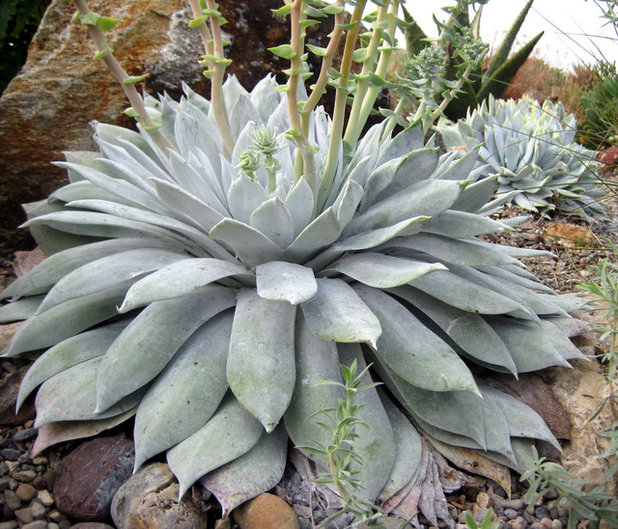
Gardens by Gabriel, Inc.
Shown: Dudleya pulverulenta





